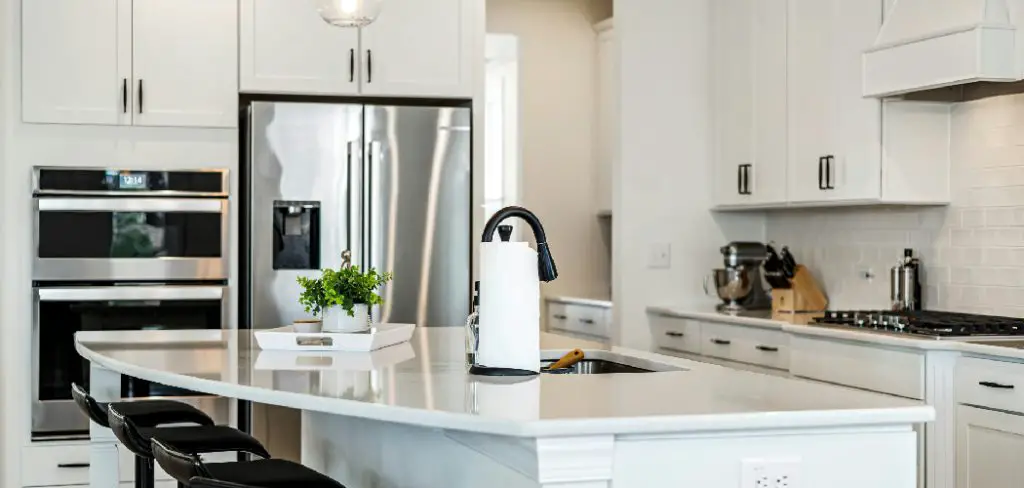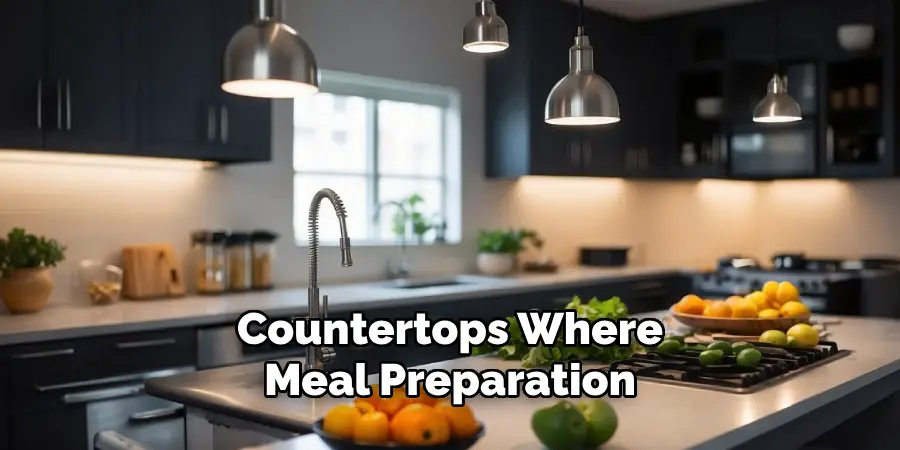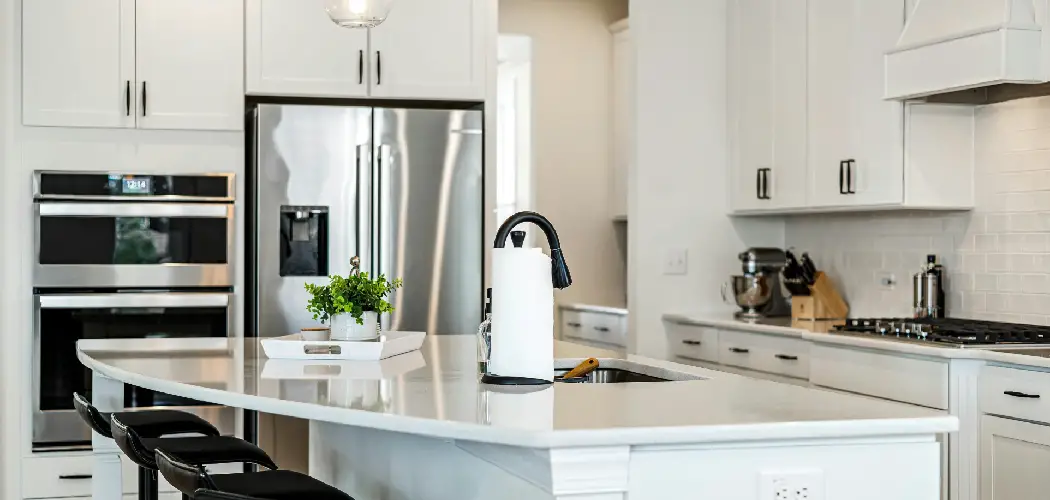Lighting a kitchen effectively is essential for both functionality and aesthetics. The right lighting not only ensures a safe and efficient workspace for cooking and food preparation but also creates a warm and inviting atmosphere for family

gatherings and social events. This guide is designed to help you with how to light a kitchen. By combining various types of lighting, such as task, ambient, and accent lighting, you can transform your kitchen into a well-lit, versatile space that meets all your needs.
Importance of Proper Kitchen Lighting
Proper kitchen lighting is crucial for ensuring both functionality and comfort in one of the most used spaces in your home. It enhances visibility, making it easier to handle sharp tools, read recipes, and cook meals safely and efficiently. Beyond practicality, well-thought-out lighting sets the mood and defines the character of your kitchen, making it a welcoming place for family and friends. Additionally, good lighting can highlight the design elements of your kitchen, such as backsplashes, countertops, and cabinetry, adding depth and style to the space. Proper lighting also contributes to energy efficiency when modern, energy-saving fixtures are used, making it an environmentally friendly choice.
Understanding the Three Main Types of Kitchen Lighting
Ambient Lighting
Ambient lighting serves as the primary source of illumination in your kitchen, creating an overall level of brightness that ensures the space is evenly lit. This type of lighting helps eliminate shadows and provides a foundation for layering other types of light. Common fixtures used for ambient lighting include ceiling-mounted lights, recessed lighting, or large pendant lights. By spreading light evenly across the room, ambient lighting ensures a comfortable and practical environment for everyday tasks and activities.
Task Lighting
Task lighting is focused and purposeful, targeting specific areas where precision and clarity are needed. It is essential for spaces like countertops, kitchen islands, and the area above the stove, where detailed tasks such as chopping vegetables or reading recipes are performed.

Undercabinet lights, pendant lights positioned over workspaces, or directional track lighting are popular choices for effective task lighting. These fixtures reduce shadows and provide ample illumination, enhancing productivity and safety in food preparation.
Accent Lighting
Accent lighting is used to emphasize particular features or design elements in your kitchen, such as a decorative backsplash, a collection of glassware, or architectural details like crown molding. It adds depth and dimension to your kitchen while enhancing its aesthetic appeal. Strip lights, cabinet lighting, or small spotlights are often employed to achieve accent lighting. While not essential for functionality, accent lighting brings a sense of sophistication, allowing you to showcase unique features and elevate the overall ambiance of your space.
10 Methods How to Light a Kitchen
1. Install Overhead Ceiling Lights
Overhead ceiling lights are one of the most common and basic forms of lighting in a kitchen. A central ceiling light fixture, whether a chandelier, pendant, or flush-mount fixture, helps illuminate the entire kitchen space. For a larger kitchen, you may want to consider a multi-light fixture to spread the light more evenly. These lights should provide general illumination to ensure that the space is brightly lit and welcoming.
2. Use Recessed Lighting for Clean, Subtle Illumination
Recessed lighting is a popular choice for kitchens because of its clean and minimalist appearance. These lights are mounted into the ceiling, providing a streamlined look without protruding fixtures. Recessed lights are great for providing

even and unobtrusive ambient lighting, and they can be strategically placed throughout the kitchen to ensure proper coverage. In particular, recessed lighting works well in the cooking and prep areas, ensuring that the countertops, sink, and stove are well-lit.
3. Task Lighting for Countertops and Work Areas
Task lighting is one of the most important types of kitchen lighting. It focuses light on the areas where food preparation, cooking, and cleaning take place. Under-cabinet lighting is the best way to achieve effective task lighting. By installing LED strips or puck lights under the cabinets, you can directly illuminate the countertops without causing glare or shadows. This makes it easier to chop vegetables, measure ingredients, or clean dishes.
4. Incorporate Pendant Lights Above the Island or Bar Area
Pendant lights are an excellent choice for providing both task and ambient lighting in the kitchen, especially over an island or breakfast bar. These fixtures hang down from the ceiling, creating a visual focal point while offering direct light to the area below. Pendant lights can be used to enhance a variety of design styles, from industrial to modern to farmhouse, and they come in a wide range of shapes, sizes, and materials. For kitchens with islands or bars, a cluster of pendant lights can provide concentrated task lighting while adding a stylish element to the space.
5. Add Under-Cabinet Lighting
Under-cabinet lighting is essential in a kitchen, as it ensures that you have focused light on the countertops where meal preparation and cooking happen most often. This type of lighting can be achieved through LED strips or small puck lights, installed underneath your upper cabinets. LED strips provide a continuous and

even distribution of light, while puck lights offer more focused beams. Under-cabinet lights can be connected to a motion sensor or dimmer switch, allowing you to adjust the light levels or turn them on automatically when you approach the workspace.
6. Use Task-Specific Lighting for Key Zones
In larger kitchens, it’s important to design task-specific lighting that caters to the different functional zones. For instance, you might need more focused light around the stove, sink, or cutting areas. For the stove, a high-powered track light or a range hood light can illuminate the cooking area while minimizing shadows. Above the sink, consider installing a focused light that ensures proper visibility when washing dishes or preparing food. Having dedicated lighting for these functional zones will make the kitchen easier to work in, as each area will have the appropriate lighting based on its specific tasks.
7. Incorporate Accent Lighting for Aesthetic Appeal
While functional lighting is crucial in the kitchen, accent lighting can also play a significant role in creating a warm, inviting atmosphere. Accent lighting is typically used to highlight certain features in the kitchen, such as architectural elements, artwork, or beautiful cabinetry. LED strip lights placed along the edges of shelves or under the upper cabinets can add a gentle, ambient glow. Lighting the inside of glass-front cabinets or the backsplash with spotlights can create dramatic effects, highlighting the design elements and textures in your kitchen. Accent lighting is perfect for creating a cozy, intimate atmosphere, especially in the evenings when you want a more relaxed mood.
8. Install Dimmable Lighting for Flexibility
Dimmable lighting gives you the flexibility to adjust the brightness of your kitchen lights based on the task at hand or the time of day. Whether you’re preparing a meal and need bright, clear light, or you’re winding down in the evening and prefer a more ambient glow, dimmable lights allow you to control the intensity of your lighting. This can be achieved with a dimmer switch installed on your existing fixtures or by choosing LED lights with built-in dimming features. With dimmable lights, your kitchen can easily shift from a functional workspace to a cozy dining area or social hub.
9. Use Natural Light to Your Advantage
While artificial lighting is essential for the kitchen, natural light should also be maximized to enhance the space. If your kitchen has windows or a skylight, arrange furniture and fixtures so that natural light can flood the room during the day. Natural light not only helps illuminate your kitchen, but it also creates a

pleasant and airy atmosphere that can’t be replicated by artificial lights. During the day, open blinds or curtains to allow the sunlight to come in and brighten up your space. Consider adding a skylight or larger windows if your kitchen lacks sufficient daylight to improve both the function and ambiance of the room.
10. Create a Layered Lighting System
A layered lighting approach involves combining multiple types of lighting to achieve the best overall effect. Instead of relying on one single source of light, combine ambient, task, accent, and even decorative lighting for a well-balanced and functional kitchen. The key to effective layered lighting is ensuring that each layer is well-placed to serve a specific purpose. For instance, recessed lights can provide ambient light, pendant lights over the island can offer task lighting, and under-cabinet lights can illuminate countertops. By incorporating different types of lighting in a layered system, you can create a kitchen that’s both functional and visually appealing.
Conclusion
In conclusion, lighting a kitchen requires a thoughtful approach that combines functionality, design, and ambiance. By considering the different types of lighting—such as overhead, task, accent, and natural light—you can create a well-lit, comfortable kitchen that supports both the work of cooking and the social aspects of the space. Each method, from installing recessed lights to adding pendant fixtures or using dimmable options, plays an essential role in shaping the mood and usability of your kitchen. Thanks for reading, and we hope this has given you some inspiration on how to light a kitchen!

